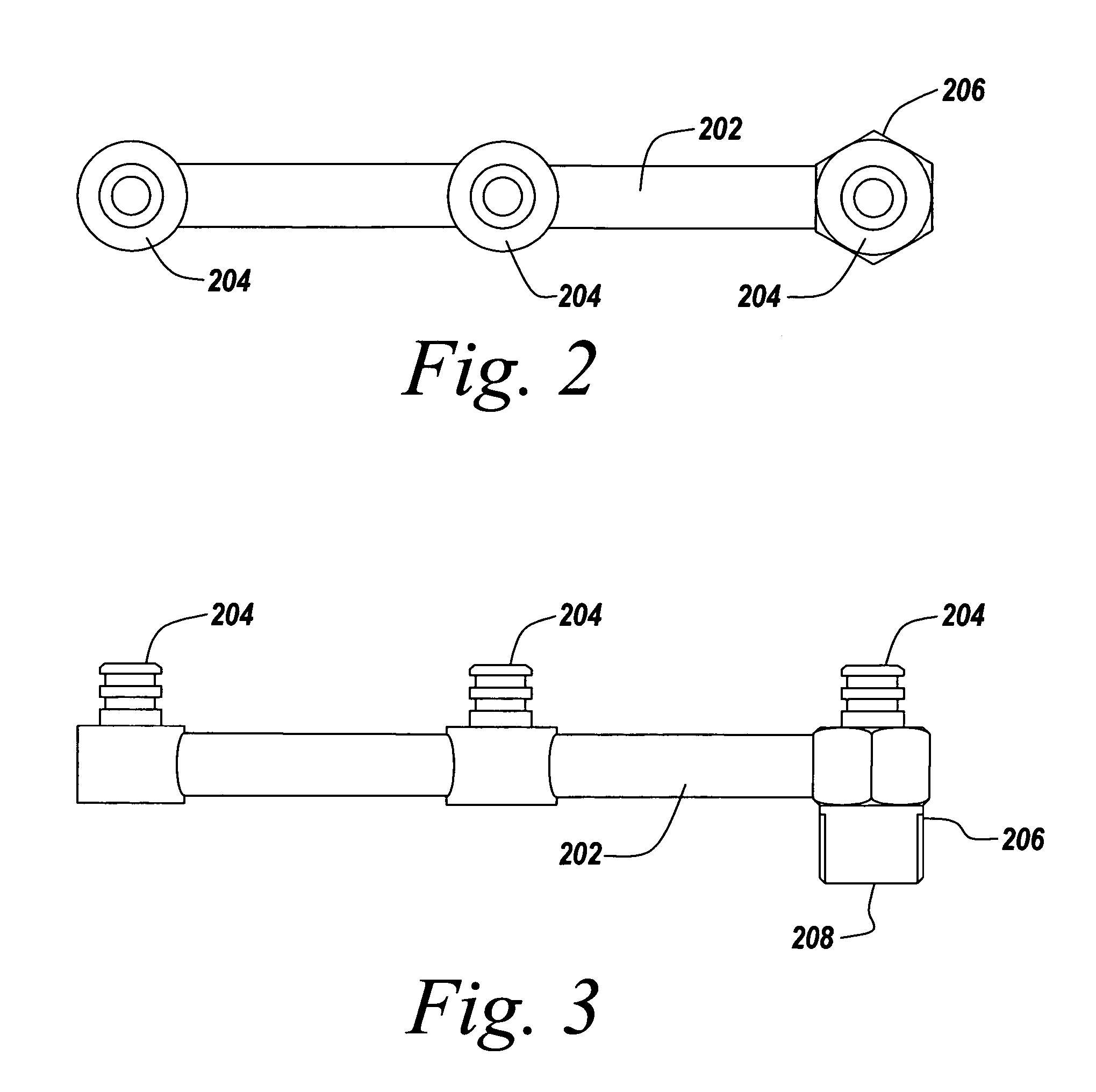Electric tankless water heater
a technology of electric tank and water heater, which is applied in the direction of fluid heater, lighting and heating apparatus, immersion heating arrangements, etc., can solve the problems of inherently energy inefficient, temperature spikes in output water, and occurrence of temperature spikes upon change of hot water demand, so as to facilitate maintaining the liquid outlet temperatur
- Summary
- Abstract
- Description
- Claims
- Application Information
AI Technical Summary
Benefits of technology
Problems solved by technology
Method used
Image
Examples
example 1
Examples of Temperature Spikes Using Traditional Heater Systems
[0062]In this example, measurements of output water temperature for various changes in input water flow rates were performed on two commercially available electric tankless water heaters (Heater A and Heater B) connected to a Bradley three-station sink (Bradley Corp., Menomonee Falls, Wis.). The faucets of the Bradley three-station sink were each controlled by a solenoid valve with a rated shutting time of 50 milliseconds.
[0063]The data of FIGS. 7A and 7B was recorded using a Monarch Data Chart 4600 data acquisition recorder (Monarch Instruments, Amherst, N.H.). FIG. 7A depicts the measurements for Heater A. Heater A was an Eemax™ EX110TC model heater (available from Eemax, Inc., Oxford, Conn.). FIG. 7B depicts the measurements for Heater B. Heater B was a Chronomite™ E-90RL model heater (available from Chronomite Laboratories, Inc., Harbor City, Calif.).
[0064]Measurement of the input water flow rate was made using a rot...
example 2
Temperature Variation Using an Embodiment of the Invention
[0072]In this example, measurements of output water temperature for various changes in measured input water flow rates were performed on an embodiment of an electric tankless water heater system of the invention (“the test water heater system”) connected to the same Bradley three-station sink of Example 1. As in Example 1, the faucets of the Bradley three-station sink were each controlled by a solenoid valve with a rated shutting time of 50 milliseconds. As in Example 1, the data of FIGS. 8 and 9 was recorded using a Monarch Data Chart 4600 data acquisition recorder (Monarch Instruments, Amherst, N.H.). The test water heater system of Example 2 was substantially similar to that described in the context of FIGS. 1-6. The controller of the test water heater system was set to maintain the output water temperature at about 105° F.
[0073]FIG. 8 depicts measurements of output water temperature for various changes in measured input w...
PUM
 Login to View More
Login to View More Abstract
Description
Claims
Application Information
 Login to View More
Login to View More - R&D
- Intellectual Property
- Life Sciences
- Materials
- Tech Scout
- Unparalleled Data Quality
- Higher Quality Content
- 60% Fewer Hallucinations
Browse by: Latest US Patents, China's latest patents, Technical Efficacy Thesaurus, Application Domain, Technology Topic, Popular Technical Reports.
© 2025 PatSnap. All rights reserved.Legal|Privacy policy|Modern Slavery Act Transparency Statement|Sitemap|About US| Contact US: help@patsnap.com



